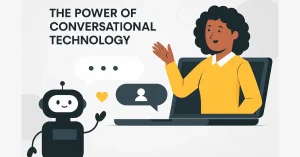Data extraction is a process that involves retrieving data from a variety of sources like documents, images, invoices, receipts, and bank statements for further processing.
In the past, this process was manually performed by employees and used to take a lot of time and effort.
Fortunately, there is now a technology available known as “Optical Character Recognition (OCR).” This technology has streamlined the process of data extraction by quickly turning images, documents, etc. into editable text.
In this article, I am going to discuss how this reliable technology has transformed the data extraction process.
Introduction to OCR Technology
Optical Character Recognition (OCR) is a pattern-based text recognition technology. It makes use of advanced algorithms to automatically extract editable text from images, scanned or handwritten documents, receipts, etc. with 100% accuracy.
Let me explain this with an example: if you scan an image or receipt with a scanner, the computer will save it as an Image file. And you cannot edit or change the data that the scanned picture contains. But with the help of OCR technology, you can easily extract all information into an editable format.
Now that you have understood what OCR technology actually is, it’s time to understand how it turns images into editable text.
How Does this technology turn images into text?
Before getting into the details, it is important to note that OCR is just a technology and cannot become useful until it is paired with some kind of tool or software. You can easily find numerous OCR-based tools on the internet.
OCR performs text extraction from images into three stages that are listed below:
- Pre-processing
- Text or feature recognition
- Post-processing
- Pre-processing:
In this stage, the OCR tool will eliminate all kinds of distortions, noises, or other things from the given image. So that, it can better understand the words or characters the input picture contains.
- Text or feature recognition:
As the name suggests, in this stage, OCR will start recognizing the words or characters that the image contains. For this, the tool will compare those words and characters with its own database and then extract the ones that have the perfect match.
- Post-processing:
This is the final stage in which the OCR tool or software will ensure the extracted is completely accurate and free from all kinds of grammatical errors.
After these three stages, the Optical character recognition will then provide editable text to the user. The fact is, all these stages are performed within seconds.
In order to provide you with a better understanding, let me explain with a live example. I have given a picture to a JPG to text converter that operates on an OCR technology. Check out the picture to see how the tool has automatically extracted from the input image.
As you can see in the picture above, the OCR-based tool has quickly extracted all the text from the image in an editable form.
Benefits of OCR Technology
Optical Character Recognition offers several benefits, some of which are discussed below:
- Higher accuracy
If you are performing data extraction from images manually, then there is a strong chance that you will make mistakes due to human nature. For instance, you may accidentally skip a word or character during extraction or make grammar or spelling errors. In this scenario, your working credibility will be damaged.
Fortunately, with the help of OCR technology, you easily turn images into editable text with 100% accuracy, all thanks to advanced pattern-matching algorithms.
- Maximum efficiency
Performing text extraction manually will also require a lot of time and effort, because you have to retype every piece of information manually. This will greatly hurt your overall working performance.
But that’s not the case with OCR technology. It quickly performs the extraction within seconds. It will save both your valuable time and effort, and allow you to focus on other essential tasks as well, resulting in maximum efficiency.
Note: The speed of OCR will be completely dependent on the type of tool you are using.
- Cost reduction
Utilizing OCR will help reduce overall cost reduction, especially for businesses. This is so because it will completely eliminate the hiring of professionals who will perform the data extraction process for you. Along with this, this technology will also eliminate the need to purchase printers, scanners, etc.
Final Words
Optical Character Recognition (OCR) is a pattern-matching recognition-based technology that has streamlined the data extraction process. This technology automatically extracts text from images, scanned documents, receipts, etc. with 100% accuracy. In this article, I have explained how this technology is turning images or documents into editable text in detail.





